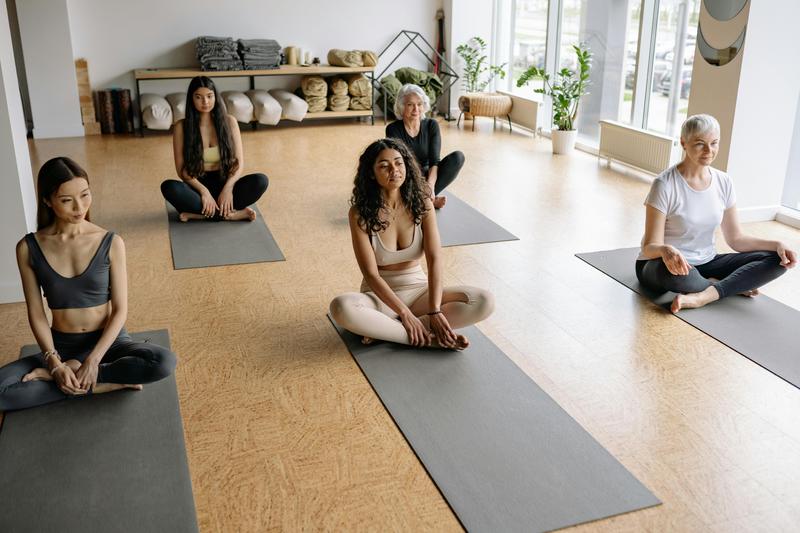Presence Isn’t Quiet. It’s Awake, Aware, and Intentional.
Many people turn to meditation, yoga, or tai chi as a way to train presence. And it works—at least on some level. These practices help the nervous system settle, slow down, and feel more steady. But there’s a catch most don’t see coming.
Presence often gets mistaken for stillness. Regulation becomes synonymous with quiet. And the nervous system, ever adaptive, learns to associate presence with silence. The result? You feel regulated when it’s calm, but as soon as life speeds up, the steadiness disappears. That’s not a personal failure. It’s a reflection of what’s being trained: a presence that only works in quiet.
Today, I want to explore why this happens—and how to shift it. Especially if you’ve built a practice around “zenning out” or using your breathwork to escape. Relief matters. But if you're consistently practicing how to slow down, shut down, or avoid intensity, your nervous system learns to regulate only in silence. So when pressure returns, your system struggles—not because you're broken, but because you've only trained half the equation.
Step One: Regulating to Quiet
Let’s be clear—slowing down is valuable. Presence often starts with stillness. Lowering emotional intensity, steadying the breath, calming the mind. This is foundational training, and it serves a purpose.
But if presence only exists on the meditation cushion, it probably won’t hold when you’re at work, in conflict, or under pressure. I’ve worked with people who could drop into silence instantly—until their boss sent a tense email or their partner hit a nerve. Then it all fell apart. Why? Because they’d trained presence away from pressure, not within it. They didn’t fail. They just trained one environment but never translated it to the rest of life.
Presence Isn’t Soft—It’s Functional
We need to shift how we define presence. It’s not a vibe or a mood. It’s not something soft, fuzzy, or spiritual. Presence is a functional state—your system staying online even when emotions spike, energy moves, or tension rises.
I once worked with someone who described their yoga class as their “reset button.” But their reset meant collapsing—going limp to feel calm. They weren’t training presence. They were training collapse. They associated steadiness with softness instead of structure. Once they learned to bring breath, posture, and focus into motion—in conversation, leadership, daily life—presence became something usable. Not just during practice. But everywhere.
Are You Training for Safety or Capacity?
Here’s a subtle but powerful distinction: many nervous system practices accidentally reinforce safety-seeking instead of capacity-building. The difference? Training for safety means calming down after stress hits. Capacity-building means staying steady as stress arises.
One client I worked with used breathwork after arguments with their partner. It helped. But it became a cycle: dysregulate, then recover. Over and over. When we shifted their training to initiate presence before the hard conversation—and to stay aware, steady, and grounded during it—they began to regulate in real-time. Not just recover afterward. That’s the difference between symptom relief and real nervous system capacity. And it can be trained.
Repetition, Not Insight, Rewires the System
This one hits high performers hard: understanding presence isn’t the same as training it. You can journal, reflect, and analyze your triggers all day. But unless you’re repeating presence in daily life, your system won’t rewire.
I’ve worked with people who’ve read all the books, attended retreats, listened to podcasts. They had language for their patterns—but their breath still tightened and their body still braced under pressure. What they needed wasn’t more insight. It was repetition. Structured breath. Interrupting autopilot. Physical posture that supports presence. That’s what trains a new baseline.
Stillness Isn’t Enough—You Have to Train in Motion
This is where most people plateau. They’ve trained presence in stillness—but not in motion. It’s like building muscle on machines, but then pulling your back lifting a box at home. The strength is there, but it’s not functional yet.
One person I worked with did breathwork every morning. It helped… until they stepped into their day. A small delay or unexpected comment would throw them off. So we rebuilt their training—not longer meditations, not more tools, just small reps of breath and intention during real life: heading into a meeting, grocery shopping, responding to a text. That’s when presence became consistent. Not because they accessed it—but because they trained it into their system. That’s when regulation became real.
From Relief to Real Presence
If you’ve been practicing the quiet part—good. That’s important. You’re not off track. But that’s only the first half. The next step isn’t abandoning what works—it’s building on it. Training presence for the moments when life isn’t calm. That’s where capacity lives.
Ask Yourself:
- What state is your nervous system rehearsing every day?
- Is your presence alive, alert, and directed—or only available in silence?
- Is your regulation practice designed for relief… or for real life?
Training Presence That Holds
If you're ready to stop managing symptoms and start building a nervous system that holds steady under pressure, I’ve built a training system for that. It integrates perception, emotion, and choice—so you don’t just understand your patterns… you actually rewire them.
I also share weekly practices on Instagram—@mikewangcoaching. And if you want more depth, you can subscribe to the newsletter for guided resources and tools to help you train your inner state with structure and clarity.

